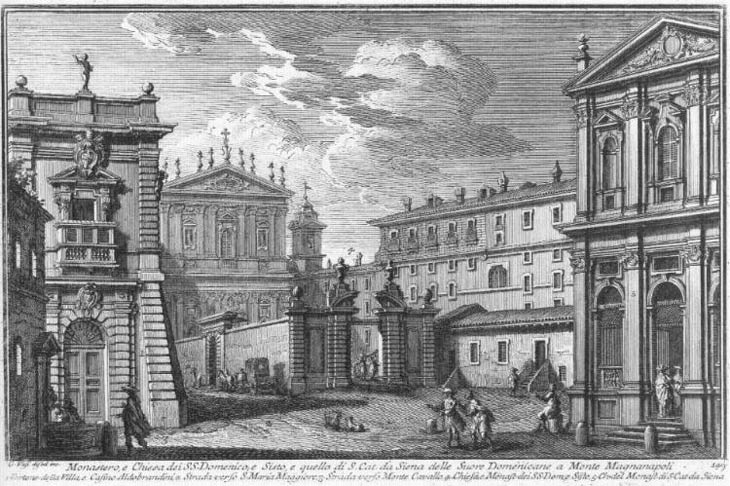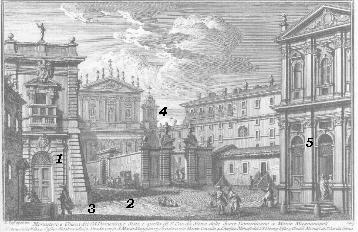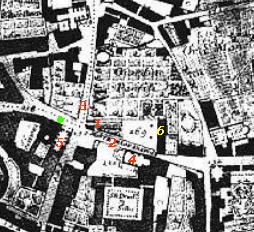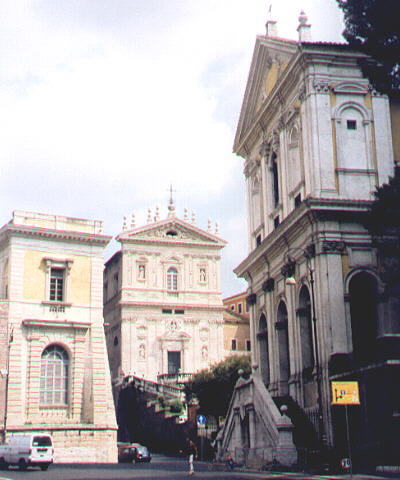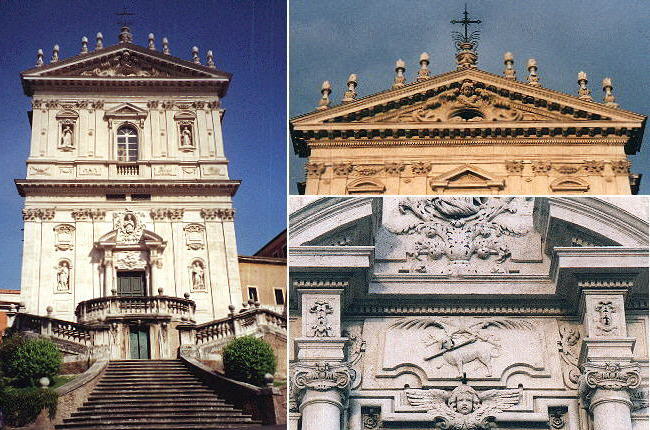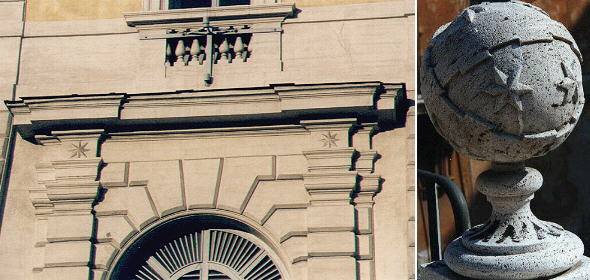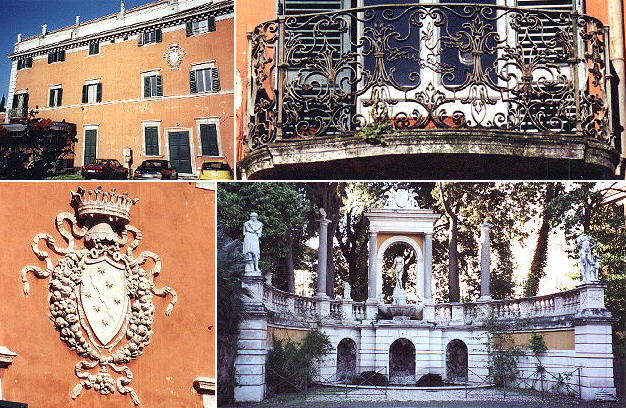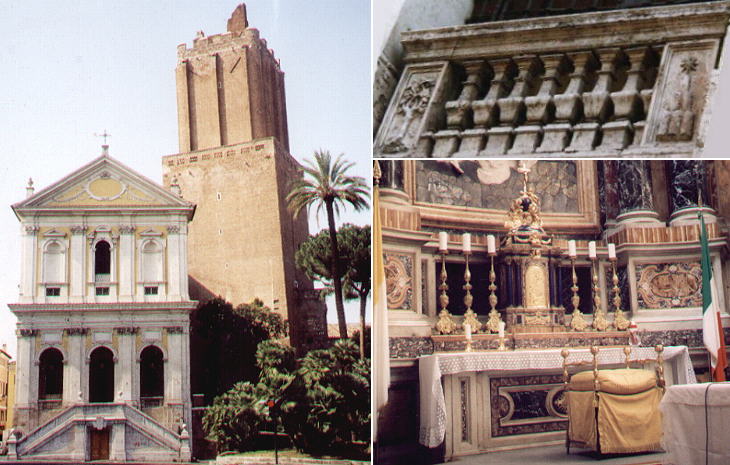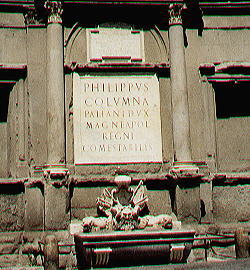  Monastero e Chiesa dei Santissimi Domenico e Sisto (Book 8) (Map B3) (Day 3) (View C8) (Rione Monti) In this page:
Rome had so much shrunk and abandoned the hills that Clemens VIII
Aldobrandini built his Villa and Casino on the slopes of Monte Cavallo
(today called again Quirinale) in an area which is considered today almost
the center of Rome (the Aldobrandini had their city palace in Via del Corso,
some 500 yards from their Villa). With water being brought also to the
higher parts of Rome other buildings were erected near Villa Aldobrandini. The view is taken from the green dot in the 1748 map below.
In the description below the plate Vasi made reference to: 1) Entrance to Villa Aldobrandini; 2) Street leading to S. Maria Maggiore;
3) Street leading to Monte Cavallo (Quirinale); 4) SS. Domenico e Sisto; 5) S. Caterina da Siena.
The map shows also 6) Casino Aldobrandini.
The level of the street (Via Nazionale) is slightly lower than it was in the past, so the entrance to Villa Aldobrandini is today a window and a little flight of steps is required to enter S. Caterina da Siena. The Church of SS. Domenico e Sisto
The fašade of the church was completed in the first half of the XVIIth century by Vincenzo della Greca and is characterized by the steps which are typical of suburban Casinos. The Dominicans or Black Friars had as a symbol a dog with a torch, with reference to Dominicanus = Dominus Canis (Dog of the Lord).
The coats of arms of Clemens VIII are lost, but the heraldic symbols of the Aldobrandini are still noticeable in some details of the entrance and on the many globes of the garden. The villa has a little casino designed by Carlo Lambardi and a fine fountain, both with heraldic references to the Aldobrandini. The balcony however shows the dove of the Pamphilj: the last heir of the Aldobrandini, Donna Olimpia married first Paolo Borghese and then Camillo Pamphily (in the small map the gardens are called Giardino Panfili).
To know more about Villa Aldobrandini see Paula Howarth's very interesting site on the Villa and its current use.
The church was initially built at the expense of Cardinal Scipione Borghese, but it was completed at the time of Alexander VII as his heraldic symbols in the balustrade show. The design is generally attributed to Giovan Battista Soria. Behind S. Caterina the leaning tower of Rome, Torre delle Milizie (Torre dei Conti). The church has a very richly decorated interior: in other pages of this web site you can see its cantoria, a relief by Melchiorre CaffÓ and a monument by Giuliano Finelli. This part of the Quirinale hill is called Magnanapoli which literally means eatNaples: the two most common explanations make reference: a) to the fact that Trajan's markets at one point were thought to be a thermal building built by pope Paulus I, hence balnea Pauli and the corruption Magnanapoli; b) to the existence in the area of towers belonging to the Colonna family; members of this family had the title of Magnus Neapolitani Regni Connestabilis because the Colonna had many fiefs in the Kingdom of Naples: a shortened or damaged inscription led to calling the area Magnanapoli; the image here below shows an inscription in Mostra di Papa Giulio III.
Excerpts from Giuseppe Vasi 1761 Itinerary related to this page:
Next plate in Book 8: Ruine del Foro
di Nerva
Go
to |
All images © 1999 - 2003 by Roberto Piperno. Write to romapip@quipo.it
